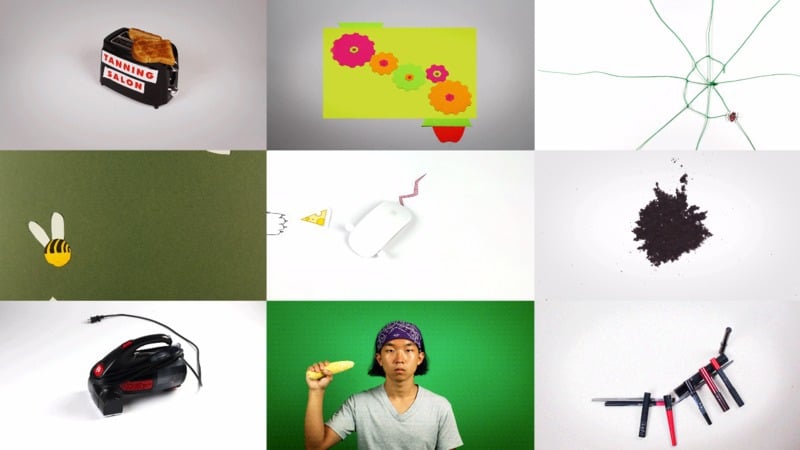Photo by Scott Webb / Unsplash
GIFs have migrated away from social media content into a new and mesmerizing art form simply called GIF art. Referencing a variety of past, minimal art forms like micro-animation, micro-cinema, stop motion photography, and cinemagraphs, GIF art is an experimental, digitally-generated medium that harmoniously blends film and visual art into a work of infinite motion.
Though GIFs are often in the form of computer animations, they do not have to be limited to digital renderings and can include real world objects in the animation process. With some items you have on hand, you can even create your own GIF projects in any studio environment.
Preparation:
We’ll be taking a stop motion approach to make your GIFs within a photo studio. The first step in executing a successful GIF animation is having all of your resources ready to go. Some major resources include:
Having a finalized sketch of your storyboard.
If you need some help coming up with some ideas on what your GIF should be about, check out this post on creative exercises.

Collecting or creating all necessary props.
During the Shoot:
Now that you’ve organized and collected all your production materials, we can dive into how to shoot your GIF project. We’ll mostly be referring to using DSLR cameras, but you can apply some of these techniques with your phone too!
As you set up, here are some things to consider:

- Set your Aperture to F8. This setting helps to create sharp, crisp images, with an average depth of field.
- Set your Shutter Speed to 1/15. As the shutter speed deals with light exposure, increasing the shutter speed to 1/30 or higher will make your image darker and decreasing your shutter speed to 1/8 or lower will make your image brighter.
- Set your ISO to 400. The ISO controls how sensitive to light the camera’s digital sensors are, so an ISO 400 would be a good setting for indoor/flash indoor shoots.
- Set white balance to Daylight or Tungsten, don’t use Auto WB. The white balance should match the source of your light, so set your camera to Tungsten (light commonly found in indoor lighting has a yellow/orange hue, which helps take away excess yellow lighting in an environment) or Daylight, which is good for average, natural daylight settings.

GIF project by student Christian Jones. And it’s as simple as that — you’ve made your first stop motion GIF! It might take a couple reshoots to get it right, but experimenting which shots you should string together for a cool GIF is part of the fun. Remember, a GIF concept doesn’t need to be complex — a simple, well-executed idea can make for an exciting and creative final product.
This content comes from Session 3 of the course Introduction to Motion Design: Animated GIFs by Ringling College of Art and Design. To learn more about techniques for motion design, enroll in the course below:
Motion Design: Animated GIFs
Ringling College of Art and Design
